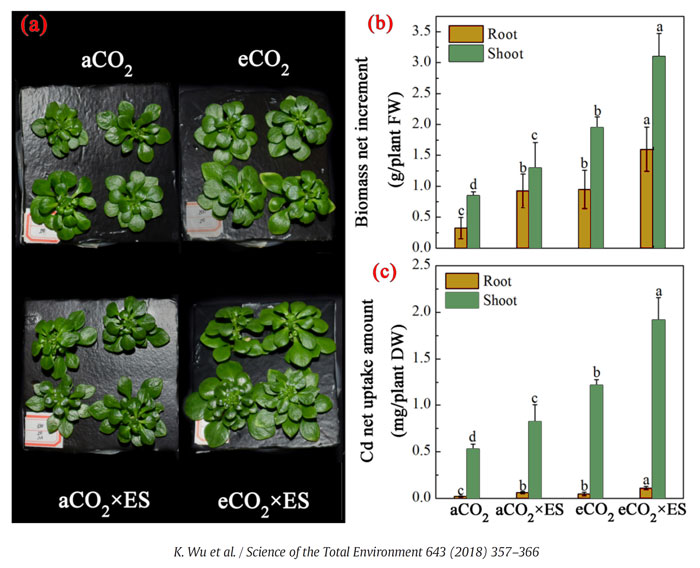| Tweet | Follow @co2science |
Paper Reviewed
Wu, K., Li, J., Luo, J., Liu, Y., Song, Y., Liu, N., Rafiq, M.T. and Li, T. 2018. Effects of elevated CO2 and endophytic bacterium on photosynthetic characteristics and cadmium accumulation in Sedum alfredii. Science of the Total Environment 643: 357-366.
Introducing their paper, Wu et al. (2018) say that "phytoextraction is a technology that employs plants, primarily hyperaccumulators, to remove heavy metals from polluted soils," also describing it as a "low-cost, environmentally-friendly technology for in situ remediation of heavy metal contaminated soils at large scale." And although some studies have examined the impacts of elevated CO2 on phytoremediation, few have done so for Crassulaceae acid metabolism (CAM) based plants. To add to this knowledge database, the eight researchers grew the CAM plant Sedum alfredii, a perennial Asian herb, in a hydroponic solution in growth chambers for three weeks under ambient (350 ppm) or elevated (700 ppm) CO2 concentrations and with or without inoculation of growth-promoting endophytic bacterium (ES).
The results of the study revealed that elevated CO2 and the presence of ES, whether alone or in combination, increased net photosynthesis (from 47-112%), water use efficiency (146-830%), biomass (59-265%, see Figure 1b) and cadmium uptake (64-261%, see Figure 1c), relative to ambient (control) conditions.
In commenting on these incredible findings, Wu et al. say they have "further confirmed the feasibility of using elevated CO2 and plant growth-promoting endophytes to promote growth of S. alfredii in phytoremediation practice." And that is encouraging news for the cleanup of soils contaminated with Cadmium (Cd).

Figure 1. Effect of elevated CO2 and endophytic bacterium (ES) on plant growth (a), biomass net increment (b), and Cd net uptake amount (c) of S. alfredii grown hydroponically in 50 µM Cd medium. Data are means ± S.D. (n = 3). Different letters indicate significant differences between treatments (P < 0.05). Source: Wu et al. (2018).




